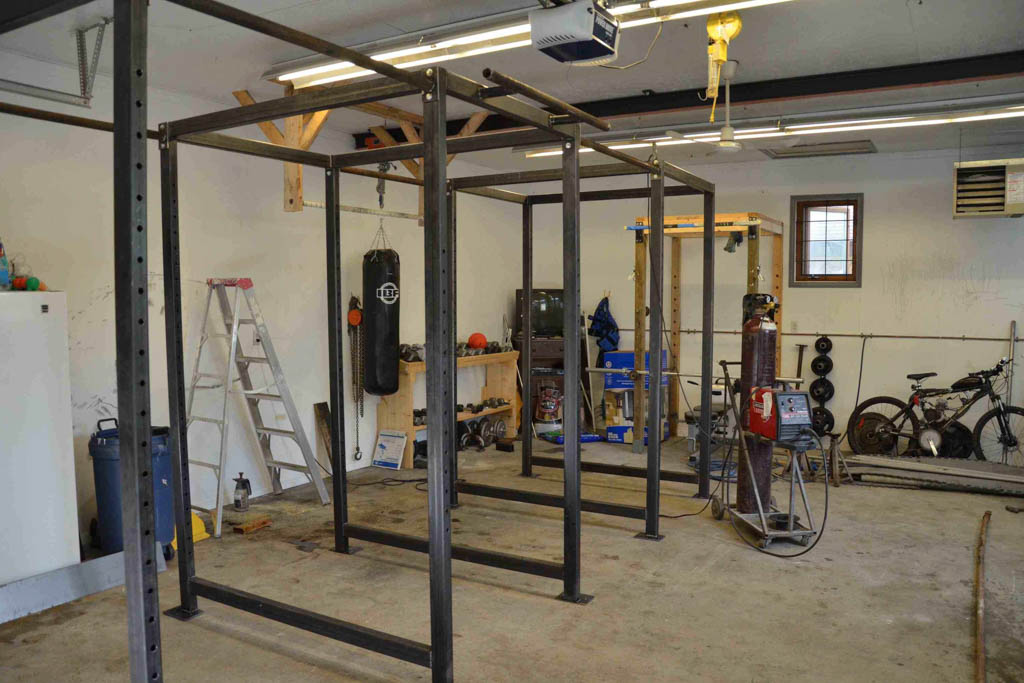If you’re a new gym owner, you’ll probably never have to skim through a community message board to find out how to use an oven to bake a set of homemade PVC gymnastics rings.
Yes, microgym ownership has changed dramatically in the last decade.

In 2022, the DIY days are over when it comes to equipment in the functional fitness world.
Everything you need to run a gym can be purchased on one or maybe two websites with a few clicks, and the gear will arrive right at your door in a shrink-wrapped pile.
That wasn’t always the case. Years ago, medicine balls, multi-station pull-up rigs, weightlifting shoes, gymnastics rings, bumper plates and kettlebells were much rarer. In fact, they were often so rare that prospective gym owners set aside time to locate or build this stuff.
Chris Cooper has his stories, and I have mine: We still use the plywood boxes we built more than a decade ago with plans downloaded from the web. Any gym owner who got into functional fitness before 2010 will have more tales.
Acquiring gear just wasn’t that easy back then.
Knowledge was pretty scarce, too. While small, independent gyms certainly existed in 2010, they were rarer, social-media connections were still in the nascent stage, and the community was less cohesive. And you certainly couldn’t find huge amounts of sound business advice on how to run a gym that wasn’t an access-only sea of machines.
So, just as we used duct tape and rocks to make medicine balls, we bumbled our way through business.
Here are the top 5 fundamental business mistakes I made around 2010:
1. I planned to do everything myself—coaching, accounting, cleaning, etc.
2. I set my rates by picking a number that “seemed right.”
3. I focused on coaching skill as the sole pillar of my “marketing plan.”
4. I rented too much space and severely underused about 30 percent of that space for a decade.
5. I never created a plan to replace myself in coaching roles so I could work on growing the business (I didn’t have a clue how to do that anyway).
Each of these mistakes can be a business killer on its own. Even together, they didn’t kill me—but that’s only because I started the gym as a hobby and didn’t need to make any money from it. Had I relied on it for income, it would have gone under.
Modern Solutions for Gym Owners
But just as mega-vendors such as Rogue have solved the problem of acquiring equipment for your gym, Two-Brain has solved the problem of acquiring the knowledge you need to run a gym.
Many people don’t realize that—even as they click away and fill online shopping carts with sleds, specialty barbells, colored bumper plates and kettlebells of every denomination.
While taking a huge shortcut with equipment acquisition, they’re still planning to figure out the business end on the fly.
Don’t do that.
Hit the “easy button” on the business side, too.
Two-Brain has years of experience and mountains of data. That’s been used to create a huge pile of resources—the equivalent of a warehouse of barbells and GHD machines. All of these resources are delivered one-on-one by a mentor who will tell you which one you need right now to make your business grow.
I’ll point you to three resources right now:
1. If you’re thinking about opening a gym, head to Startagym.com for the free resources. And get Chris Cooper’s book, too.
2. If you’re already a gym owner, check out any of our platforms to see what we’re all about. We publish a huge amount of content daily:
– Two-Brain blog
– YouTube: Run a Profitable Gym
– Instagram
– Facebook
– Twitter
– TikTok
3. Book a call to find out how a mentor can help you grow your gym: book a call.
Can you figure out how to run a gym on your own? Probably? Eventually? Just like you might be able to make a sketchy set of gymnastics rings in your oven.
Or you can just order real rings online and get a mentor who can guide you to profitability. Do those two things and you’ll save yourself about a decade of struggling.

